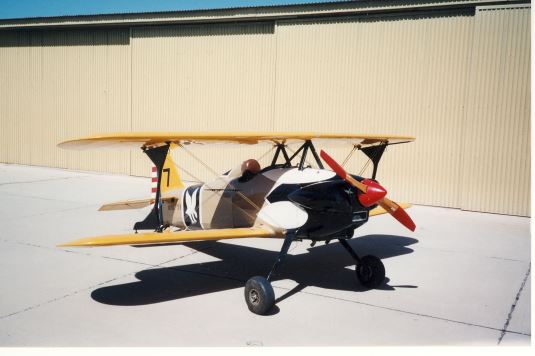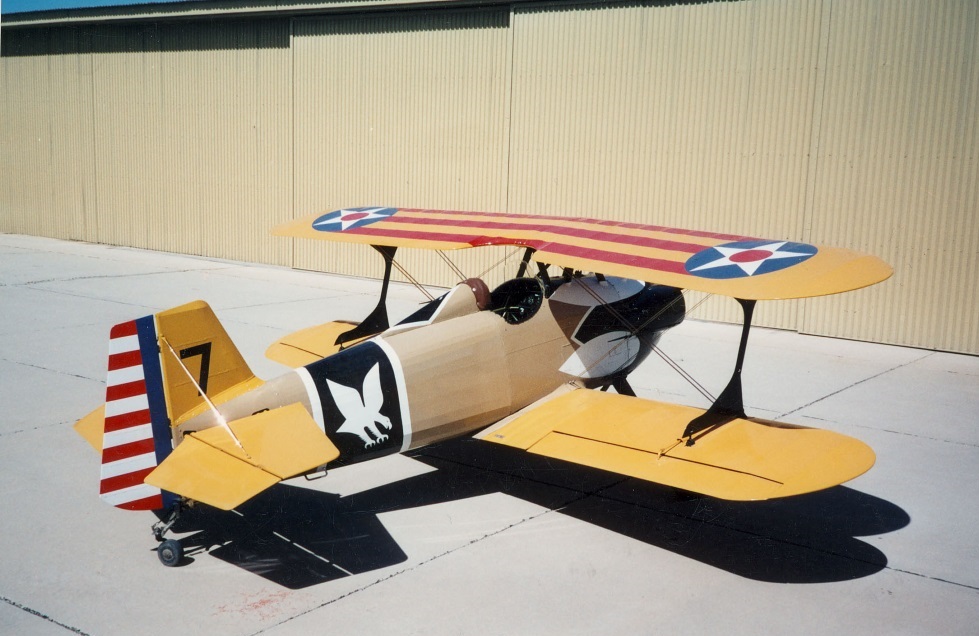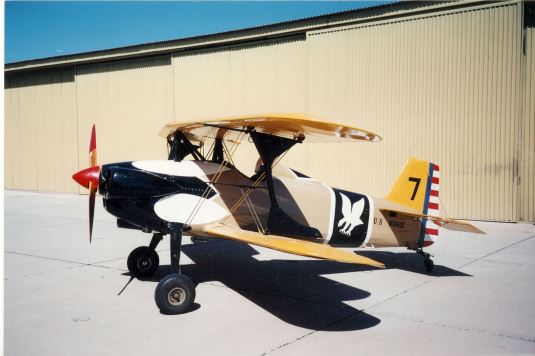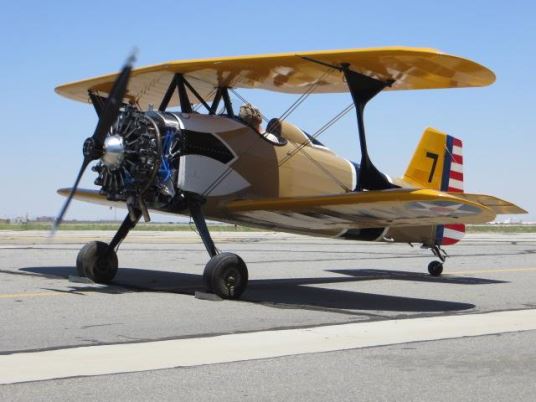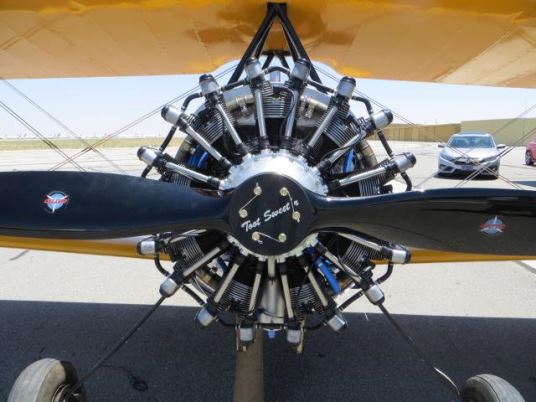"Toot Sweet" is pretty much a standard Meyer's "Little Toot," using wood wings with ribs of the stick-and-gusset type, and employing the alternate steel-tube fuselage. Covering is of Eonnex, with DuPont automobile enamel dressing it up in the color scheme of the Curtiss "Hawks" which were flown from Selfridge Field by the Army Air Corps during Fred's high school days. Fiberglas was used for the fuel tank, engine cowling, wheel pants and various fairings.
A 125 hp Lycoming ground power unit, swinging a 72 x 54 Hegy propeller provides power for the ship. This combination gives an honest 110 mph cruise at 2250 rpm. Accurate data on performance has not been compiled, partly because of prevailing rough flying conditions, and partly because of Fred's attitude. He says, "Heck, I'm not trying to sell it."
While "Toot Sweet" is a heavy ship (950 lbs. empty), this is not an undesirable feature in Fred's eyes. "She climbs real well, handles beautifully and lands like a 'dream'. I love butterflies but I have no use for an airplane that flies like one," says Fred.
The only purchased components which were utilized on the ship are the spinner, propeller, gear legs, wheels, landing and flying wires, instruments and, of course, the engine which Fred converted himself.
Fred (EAA 14270) lives at 16623 Hazelton in Detroit, MI. He learned to fly in the waning days of World War II, and continued on to earn his commercial and instructor ratings. Like many other pilots, he eventually turned away from flying but was brought back to the fold through the EAA and the homebuilt movement. Living halfway between the headquarters of both of Detroit's EAA Chapters, Fred joined them both and is now an active member of East Detroit Chapter 13 and West Detroit Chapter 113.
The following is an article from the June, 1969 Sport Aviation magazine.
Construction on Fred Lettau's "Little Toot" biplane got underway on New Year's Day, 1963 when the first saw cuts were made on some nose blocks for wing ribs. Four years, eight months and sixteen days later, on September 16, 1967, Fred's "Toot Sweet" took to the air for the first time. During that time Fred spent most of his winter evenings and weekends in the basement of his house where conditions were right for gluing, while the warmer weather found him in his garage where the metal work was accomplished.
******************************************************************
Toot Sweet found a new home in California when the famous Fitzhugh Fulton, pilot, ferried the Space Shuttle back to Titusville Florida piggyback on top his Boeing 747. While waiting to go home, he spotted this Little Toot in a hanger. Taken with it, he bought it and flew it back home. It wasn't comfortable for the tall Fitz so lots of stops were made on the voyage. The Toot rudder pedals were pushed forward to give him more leg room. He then repainted her in Army colors. Tommy and Joy met Fitz at Oshkosh and were priviledged to hear lots of wonderful stories.
Later Fitz sold his Toot Sweet to Joann Painter. Matthew W Stinemetze is her test pilot for engine modifications.
They installed a radial engine and it is now in test mode. We are wondering if a Waco type cowling will be added later?


